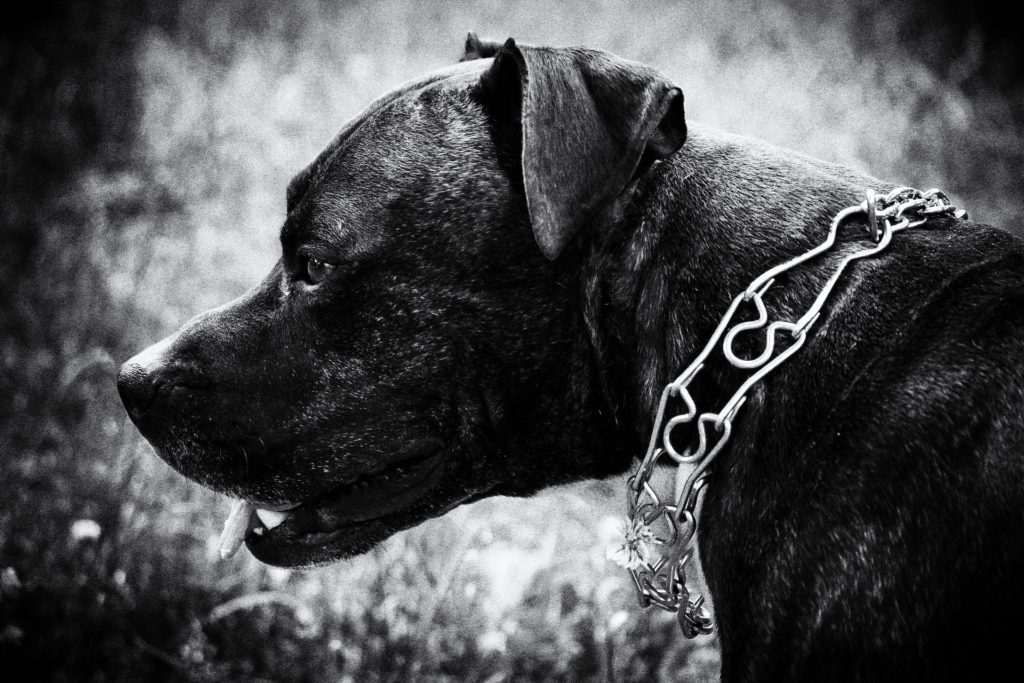
Nola is exploring a Colorado stream near Breckenridge. You can see the training collar on her. As a result, Nola no longer needs it for training but we continue to have her wear it for safety.
How to Find the Best Dog Training Collar
You can use dog-training collars to train your dogs quickly and easily, and teach them how to behave under just about every situation. One of the key factors that contribute towards a well-trained dog is how you conduct her training process. Your dog will be able to tell what you want 10 times easier with a training collar used properly. Consequentially, the dog owner can communicate with his or her dog immediately with the use of a remote and a collar.
A training collar will help reinforce the desired behaviors in your dog. Therefore, you can IMMEDIATELY send a message when your pup is doing something that he needs to stop doing. Training collars for dogs have countless uses that assist in building a firm and trusting relationship between a dog and his or her owner.
Uses of Dog Training Collars
There are many uses for training shock collars for dogs but essentially only two that are more important than the others.
1. Potty training –
Potty training can be difficult and messy especially in the early stages of training. Shock collars for dogs train the dog by telling him where he is not allowed to potty. If he was to stray from his training you would reprimand him in the form of a tone or vibration or small shock. Training collars for dogs can be extremely convenient for potty training. You do have to be there and catch them in the act.
Personally, I haven’t used a collar to teach potty training. I found the best way to potty train a dog is to keep him in a limited space and to watch for his need to potty. If you catch him going on the floor, immediately tell him “NO” and move him outdoors. Stay on top of this for a few days and you’ll be rewarded. In addition, your pup should be a little older before you put a training collar on him. Pups should be potty trained early on.
2. Teaching them obedience –
The definition of obedience is all about how your pup obeys the rules and how he complies with the person in authority. From the dog’s viewpoint, this person would be the pack leader. Dog owners need to make it clear to their dogs that they, as pack leaders, are in charge. and that the dog has to respond to the orders his pack leader gives. Therefore, a training collar will provide a basis to help teach the dog when they are supposed to move, or when they are supposed to stand. In addition, you can also use a training collar to help teach them how to behave in public places.
3.Teaching your pup not to bark –
This requires a specialized collar called a bark collar. It provides a small shock when the dog barks. A bark collar will stop your pup’s barking very quickly.
Types of Dog Training Collars
1. Everyday Collars –

Everyday collars are basically normal collars that are used more of as an accessory than a training aid. They are suitable for all dogs and they are usually helpful if you need to locate your dog when he gets lost. You’ll be able to hold license information and vaccination information in the collar which will make it easier for someone who finds your run away dog to bring him home. There is a loop to attach a leash for activities. You should have an everyday collar on him at all times.
2. Metal Prong Collars –

These collars will work for dogs that are stubborn or need strict training. They look like they are very harsh, but your dog will immediately stop pulling on the leash, so the prongs don’t hurt your pup. Dogs are smarter than that. You should never use a metal prong collar on your dog, unless you are with him. You need to watch your dog so he doesn’t get the collar caught on something that causes a bad situation. You’ll find a good metal prong collar at this link. metal prong collar.
3. Smart Collars –
Smart collars are more hi tech and you can judge the changes in behavior of your dog with a smart collar. You can use one to monitor your dog’s capabilities and work on their behavior when you are not with him. They are compatible with your phones, which means you can keep an eye on them even if you are not around. You should keep doing research on these because the technology is improving everyday. Here is a tracker that costs a bit more but doesn’t require a monthly subscription to work. That will save money over time. Check out these smart trackers.
4. Martingale Collars –
Also known as slip collars, these collars are designed to make sure the dogs do not slip out of the collars and run away. When the dog pulls, a special mechanism tightens itself around the neck, but still maintains a breathing space for them. The collars are commonly made from nylon and are available in all sizes and colors. Check out these Martingale collars.
5. Muzzle Collars –
Muzzle collars are essentially head collars or mouth collars. They act as a leash around the mouth of the dog. It is used to train the dogs how to walk with a leash and how to improve there behavior in public places as well. You can teach the dog that they are not supposed to pull on their leash. You can stop your dog from biting behaviors too. Here is a very nice muzzle collar.
6. Electric Shock Collars –

Now as daunting as the name sounds it is not really a big deal. They require your dog to pay attention to your commands, or they would have to feel a shock. Shock collars have different features and settings that allow you to set the shock levels. You should always start with the lowest setting and carefully watch your pup’s behavior. Raise it just to the point where your dog will obey you. Personally, I prefer a collar that has a tone, a vibration setting, and a shock setting. I have found that you won’t often need to use the shock setting. The vibration setting usually works just fine. I really like the Patpet training collar. It’s features include water resistance, a good range, reasonable price, ease of use. Here is a post with additional information on electric shock collars. Review of Training Collars
7. Break Away Collars –
Breakaway collars are great for everyday use. They allow your dog to easily roam around even if they are on a leash. If your dog keeps pulling on the breakaway collar, it will break itself, and prevent choking. Here are some very cool breakaway collars.
8. Bark Collars –
A bark collar may well be the answer to stop your dog’s annoying barking. These collars help your dog understand they are not supposed to bark at everything they see or do not like. Click the link to see an excellent bark collar
Precautions with Training Collars
When you put any kind of collar or implement on your dog, you need to watch how he behaves with it. Therefore, training collars should never be on your dog unless someone is there to supervise your pup the whole time is is on him. You’ll need to immediately correct the situation if there is any sort of problem.
You will need to set shock levels at very low settings and then increased SLOWLY, using a lot of patience. You really don’t need to set it very high. It is a training device and should be used more as a device to alert your dog in an immediate and urgent way.
I used a training collar for a little over a year. Now I don’t need one, and I haven’t used one for over a year and a half. As a result, my pup does just fine walking off leash, and though I give her freedom, she comes when I call her.

1 comment for “How to Find the Best Dog Training Collar”